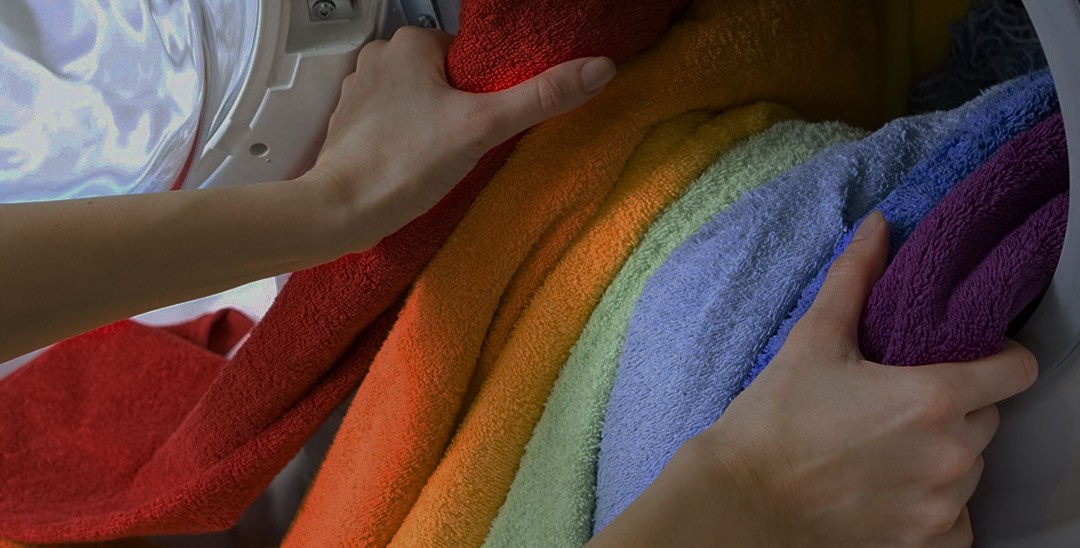Open those windows and let the sunshine in! But be careful where those rays go because they could fade some of the more integral parts of your home environment.
Sometimes we forget about some of the household items that blend into our homes so well that they become a part of the scenery. These items collect dust and dirt and become damaged, faded, or discolored in their relative inactivity. Since we see them every day, gradual changes happen without our noticing. Then, one day, the realization sets in, and our perception of the item’s value sinks.
Guest room items are often overlooked, as many comforters on guest room beds become sun faded from being in direct sunlight. Draperies, upholstery, rugs, and pillows all fade into the background. While these items brighten our homes, they are collecting dust, grime, food crumbs, and stains.
We’re a professionally trained fabric care business with the knowledge and equipment to help you care for your household items so you can enjoy them even longer. Here are some tips you can use to get the most out of home items that are such an important part of our daily
lives.
Comforters
Comforters rarely become soiled as they rest atop the other blankets and coverings on a bed, but sooner or later they will acquire staining or collect enough dust to warrant a cleaning. Comforters left in direct sunlight can become discolored or faded due to the direct light on the dye. It is best to keep comforters and heirloom quilts out of direct light to prevent damage.
We can process your comforters and quilts and get the dust and grime out of them safely. Many comforters will not fit into a home washer and dryer, and therefore won’t be cleaned properly.
Handmade quilts are especially susceptible to dye bleeding since the fabric components of the quilt may vary.
Blankets
Blankets are available in many fibers and construction types. These include wool, cotton, acrylic, polyester, and polyurethane. A blanket’s construction plays a direct role in its thermal qualities and should be cleaned in a way that will protect its ability to contain heat. We are skilled in the methods of cleaning blankets to preserve their heat retaining qualities and appearance.
Decorative Pillows
Upholstery fabrics used for furniture are usually used to cover decorative pillows. Occasionally, pillows are also made to match draperies or other home furnishings. Most of these items are not supposed to be cleaned unless the manufacturer recommends a procedure. This is a task best left to us as we can help you get them clean without destroying them. Ask us for help when you find your items may require cleaning.
Upholstery
The fabric covering for stuffed furniture and cushions is known as upholstery. Upholstery cannot readily be removed for cleaning, as the fabric is usually nailed onto the frame of the furniture. The covers on the cushions usually have a zipper, giving rise to the myth that the cushions can be taken out and the cover can be cleaned, much like a pillowcase to a bed set. This is not true–in fact, the zipper was put on for the convenience of the manufacturer. Most manufacturers do not expect the cover to be removed from the cushion during use or cleaning.
One should never remove cushion covers for separate dry-cleaning or washing. Any tumble cleaning method can destroy the back and shrink or otherwise damage the upholstery fabric. There are several different cleaning methods from spot cleaning to a light rub that can work on upholstery. Since each fabric is different and the correct method is not obviously apparent, the best thing to do is take the item to us with the cushion inside the casing. We will take care of the rest!
Draperies
Draperies are often left hanging for years before they are taken in for cleaning. Often, exposure to sunlight and changing temperatures lead to fabric damage in the drapes. In time, soil, and dust in the room, as well as outside atmospheric dirt and gasses from industry, automobile, and construction, may soil the drapes. Many of these soils can be removed through careful cleaning practices.
Water stains are caused when moisture from condensation on the window, humidity or spilled liquids causes the soils to disperse, leaving a stained area.
Moisture may also be responsible for displacing drapery sizing. After the moisture evaporates, a ring or streak may be noticeable because any solvent-soluble soils will be removed. You may notice discoloration due to light combining with oxygen, which tears down certain chemicals in fibers.
Professional cleaners like us can get water stains out of drapes, but only if the drapes can withstand the process. Ask us about your drapes before you decide to have them cleaned.
Probably the main complaint we hear is that the drapes have yellowed in general or possibly yellowed more noticeably in certain areas of drapes. Most fibers have a natural tendency toward slow oxidation and yellowing both from aging and from atmospheric exposure. Any drapery material used to cover a window is exposed to both direct and indirect lighting. Some fabrics are treated with sizing or finishes to impart body. Some of these sizing’s oxidize and yellow with age. In some cases, this yellowing is more pronounced on the leading edge or fold of the drape. This indicates a greater exposure to atmospheric gases, smoke fumes, and cooking oils.
Together, we can get the most out of your household items just by remembering they’re there. The best way to prevent excessive damage or fading is to rotate a few different sets of drapes, blankets, or comforters periodically, or with the seasons. Keep furniture out of direct light to minimize fading. This will not only brighten the look of your home, but it will ensure that you get the most mileage out of your household items.
